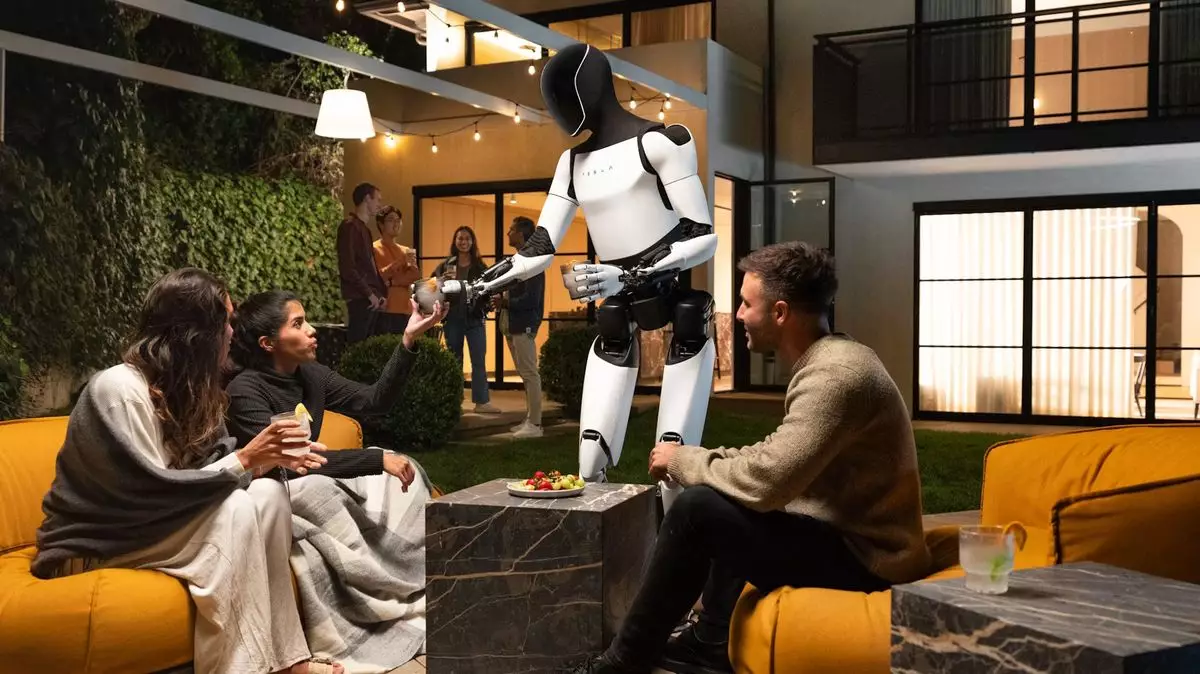In recent years, the notion of humanoid robots has experienced a renaissance, particularly under the dynamic leadership of figures like Elon Musk. Musk first introduced the concept of Tesla’s humanoid robot, dubbed “Optimus,” back in 2021. The early reveal left audiences somewhat bemused, as the prototype turned out to be a person clad in a suit rather than the futuristic robot anticipated. Fast forward to 2022, we were treated to the first prototype that moved in a more lifelike manner, albeit at a slow pace. This phase seemed to bypass skepticism and generated a sense of curiosity about the robotic technology Tesla was developing. The event, aptly named We, Robot, showcased not just singular prototypes, but an entire fleet, amplifying the promises made about their capabilities.
During the latest presentation, Musk enthusiastically proclaimed that Optimus would be able to perform a multitude of tasks, including walking dogs, babysitting children, and even serving drinks. This overzealous ambition sounded attractive but also raised questions regarding feasibility. Musk’s remarks suggested an image of a ubiquitous robot companion that could cater to the needs of an average household, a notion that, while enticing, appears to rest on a shaky foundation. One has to wonder if such an assembly of abilities is not only a marketing tactic but also a way to capture public imagination while masking deeper technological limitations.
Furthermore, Musk’s assertion that “everyone” would want an Optimus robot strikes at the heart of a broader, more existential discussion about human-robot interaction and reliance on machines for day-to-day tasks. While Musk’s excitement is palpable, the feasibility of integrating such robots into daily life is far from assured. The distinction between aspiration and actuality in the realm of robotics is often blurred, and Musk’s pattern of making lofty promises can lead to misinterpretation about the timeline and nature of these advancements.
One of the most significant takeaways from the recent event is the suspicion surrounding the capabilities of the robots presented. Despite Musk’s grand claims, observers noted that the robots, which included one that served drinks, were allegedly being controlled by Tesla employees behind the scenes. This revelation alters the narrative from one of autonomous beings operating seamlessly in human environments to a more controlled setup, possibly devoid of true AI capabilities. The initial impressions of the robots delivering drinks and interacting with guests may have been carefully choreographed rather than spontaneous displays of robotic autonomy.
Social media commentary echoed skepticism, reinforcing the notion that Musk failed to definitively claim these robots operated independently. Given past instances of embellishing capabilities for the sake of public relations, it raises the question of how much Tesla might be exaggerating the state of its technology. The absence of clear information and transparency about the actual functioning of Optimus not only stirs speculation but also may hinder trust in the company’s technological advancements.
The concept of humanoid robots like Optimus bringing transformative change to our lives is undeniably intriguing, yet the timeline remains uncertain. Proposals of fully autonomous bipedal robots wandering among us, engaging in complex tasks, sit at the apex of excitement and skepticism. Can we expect inroads similar to those predicted for self-driving vehicles and other innovative technologies? The trajectory of robotics is fraught with challenges related not only to engineering but also ethical considerations and public acceptance.
While the futuristic vision painted by Musk harbors a strong appeal, it is crucial to maintain a balanced perspective. Without definitive advancements in AI and robotics that ensure safety and functionality in real-world applications, the dream may remain just that—a dream. As we stand at the intersection of hope and technological potential, it becomes essential to scrutinize the path forward carefully, spot inconsistencies, and celebrate progress, however gradual it may be. Ultimately, the road to achieving the utopia Musk envisions lies not just in innovation but also in a thoughtful exploration of its implications for humanity at large.

